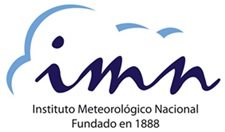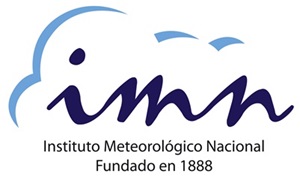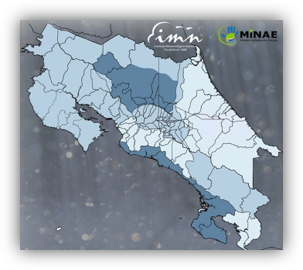Weather warnings
Jul
03
Weather Warning (Update)
Intertropical Convergence Zone active due to indirect influence of Hurricane Beryl
July 3, 2024
05.00 p.m.
Discussion: The positioning and reactivation of the Intertropical Convergence Zone over Costa Rica is due to the indirect influence exerted by Hurricane Beryl as it moves northwest of the...
Jul
03
Weather Warning
Intertropical Convergence Zone active over Costa Rica due to indirect influence of Hurricane Beryl
July 03, 2024
9:30 a.m.
Diagnosis: Hurricane Beryl (currently Category 4) is located at this time, approximately 1050 km northeast of Puerto Limón. This system continues to move west-northwest at approximately 30 km/h...
Jul
03
Aviso Meteorológico
Influencia de la Onda Tropical #15 durante esta noche
02 de julio de 2024
11:30 p.m.
Diagnóstico: La cercanía de la Zona de Convergencia Intertropical al país junto con la influencia de la Onda Tropical #15, favorecen precipitaciones de variable intensidad, incluyendo aguaceros...
Jul
02
Aviso Meteorológico (Actualización)
Tránsito de la onda tropical #15 este martes (actualización)
2 de julio de 2024
5:00 pm
Diagnóstico: La onda tropical #15 se encuentra transitando sobre el territorio nacional en la tarde de este martes. El paso de este sistema ha favorecido precipitaciones variables sobre el país,...
Jul
02
Informative Meteorological Warning
ntense Hurricane Beryl transits towards the center of the Caribbean Sea
July 2, 2024
10.15 a.m.
Discussion: Beryl continues to move over the Caribbean Sea, its current movement is towards the West-Northwest with a speed of 35 km/h. At 9 am. Its center was located near latitude 15.3 °N and...
Weather warnings history
In this section you will find the weather warnings history.
Aviso Meteorológico-IMN-030724-0500pm
Jul
03
Weather Warning (Update)
Intertropical Convergence Zone active due to indirect influence of Hurricane Beryl
July 3, 2024
05.00 p.m.
Discussion: The positioning and reactivation of the Intertropical Convergence Zone over Costa Rica is due to the indirect influence exerted by Hurricane Beryl as it moves northwest of the Caribbean Sea basin. Beryl remains a Category 4 hurricane with maximum sustained winds of 220 km/h, located 100 km west-southwest of Kingston Jamaica, moving west-northeast at a speed of 31 km/h.
This afternoon, very heavy rains and thunderstorms have occurred in the Northern Zone, Northern Pacific, Central Valley and mountains of the Caribbean. The highest accumulations are recorded at the stations: Pococí and Santa Clara de San Carlos 135 mm, Sarapiquí 76 mm, Liberia and Bagaces 63 mm, Coronado 74 mm, Goicoechea 50 mm, among others.
Forecast: During the rest of the afternoon and during the night of Wednesday in the Pacific and Central Valley, rains of varying intensity and isolated showers with thunderstorms will continue, estimated amounts of 30 - 50 mm with maximums between 70 - 100 mm in periods of 12 hours. The most significant precipitations are expected at the end of the afternoon and at night. Probability of fog and fog banks in the Central Valley and mountainous areas of the Pacific from this afternoon until Thursday morning.
In the mountainous Caribbean regions and the North Zone, heavy showers and thunderstorms are expected to continue until early evening, then as the night period progresses, rains of varying intensity will continue, and these precipitations may also extend to a lesser extent to the coasts of Limón. Accumulated amounts are estimated between 10 - 60 mm with maximum amounts of 90 mm in 12-hour periods.
The probability of rain is estimated near the Pacific coasts during the early morning and first hours of Thursday.
Warning: The rains that may occur in urban areas may cause flash flooding and sewer saturation due to the high saturation of the soils. Saturated soils are present in the mountains of the South Pacific, low areas near the coasts of the Central Pacific and South Pacific, the mountains to the west and south of the Northern Zone, as well as both peninsulas. All regions are vulnerable to landslides and possible flooding.
Due to the above, the IMN recommends:
- Be careful due to sewer saturation in places prone to this type of flooding.
- Prevention against electrical storms and seek shelter in a safe place in case of strong gusts of wind near storm clouds, due to the possible fall of tree branches, power lines, among others. These gusts can reach 80 km/h in some isolated cases.
- Stay informed through social networks, Twitter: @IMNCR, Facebook: Instituto Meteorológico Nacional CR and the WEB Page: www.imn.ac.cr
Rebeca Morera R
Meteorologist
DMSA-IMN
 RSS IMN latest alerts(Local Notification): https://www.imn.ac.cr/en/web/imn/avisos-meteorologicos/-/asset_publisher/lTlyP4wEZlDa/rss
RSS IMN latest alerts(Local Notification): https://www.imn.ac.cr/en/web/imn/avisos-meteorologicos/-/asset_publisher/lTlyP4wEZlDa/rss 


